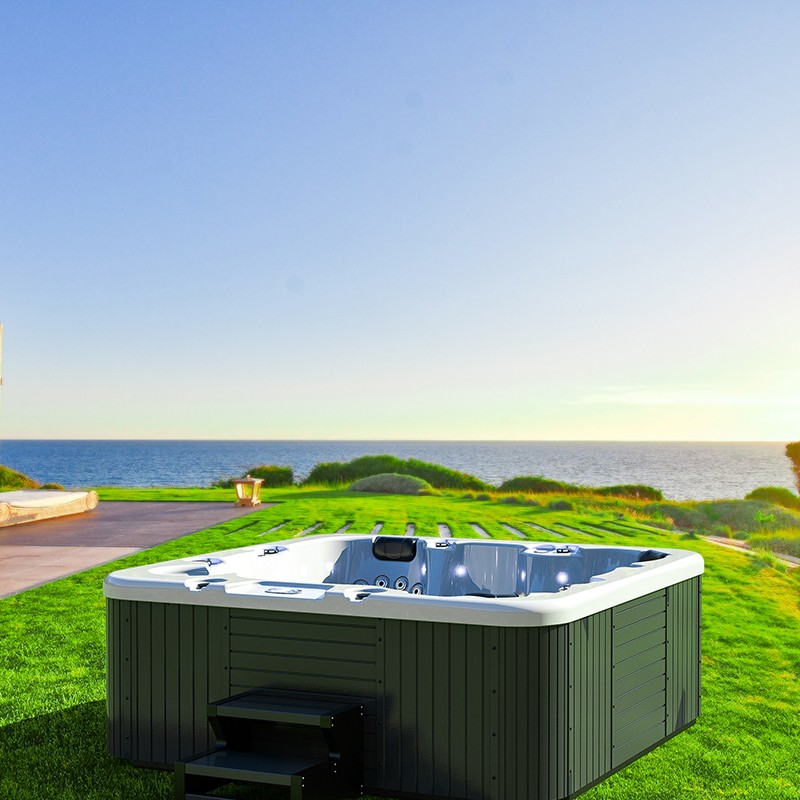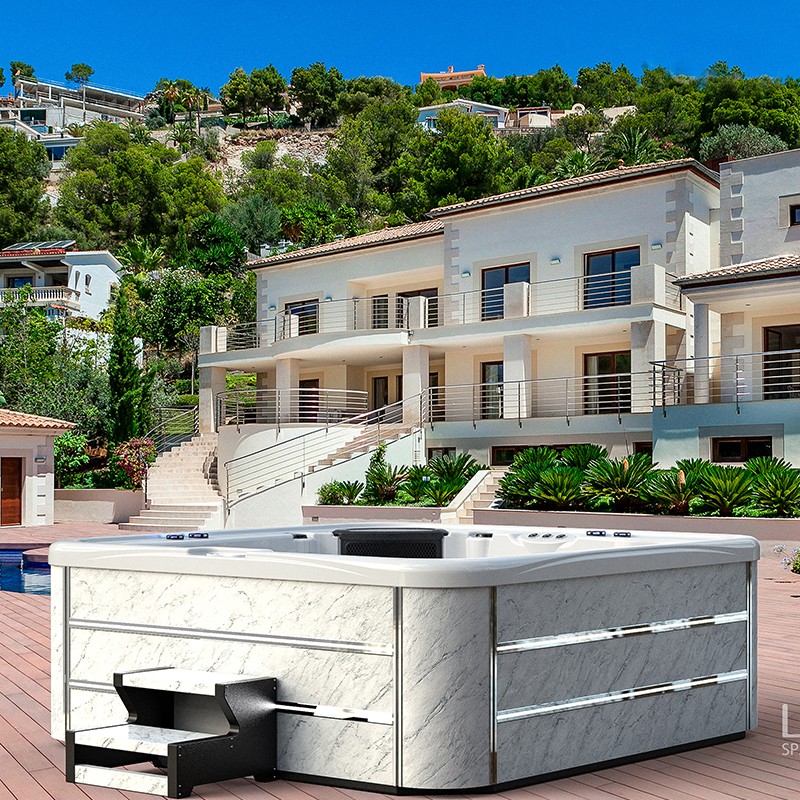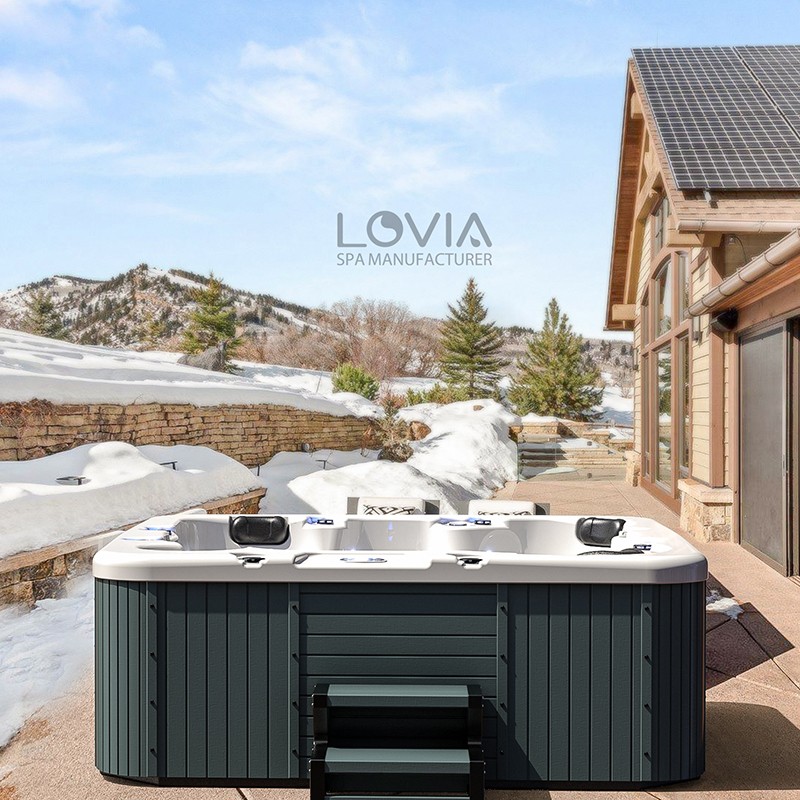
Does a whirlpool spa hot tub heat up faster with the jets on or off?
2025-08-21 15:35A whirlpool spa hot tub is a modern spa device that combines comfort, therapy, and enjoyment. It relies on water jets to provide a massage effect while also providing heating to maintain water temperature. In daily use, many users are concerned about a practical question: Does a whirlpool spa hot tub heat up faster when the jets are on or off?
This question may seem simple, but a professional, detailed, and logically rigorous answer requires a comprehensive analysis of multiple technical dimensions, including hydraulic dynamics, thermodynamic transfer efficiency, device design and structure, power distribution, and control logic.
This article will systematically explain the actual differences in heating efficiency of a whirlpool spa hot tub with the jets on and off, and carefully analyze the influencing factors to provide users with a reliable basis for judgment.

Understanding the Basic Structure and Heating Mechanism of a Whirlpool Spa Hot Tub
To explore whether heating speed is affected by the jets' on/off state, it is first necessary to have a deep understanding of the basic structure and operating principles of a whirlpool spa hot tub.
1. Basic Construction
A standard whirlpool spa hot tub typically consists of the following core components:
· Main tub: holds water and supports people;
· Heater: typically an electric heating element, responsible for heating the water to the set temperature;
· Circulation pump/jet pump: drives the water through the jets, creating a hydrotherapy effect;
· Jet heads: embedded in the tub wall, adjustable water flow direction and intensity;
· Control system: controls temperature, pump speed, jet on/off, etc.;
· Filtration system: ensures water purity.
2. Heating Method
Whirlpool spa hot tub heating systems are generally categorized into two types:
· Static heating: water is heated while stationary or circulating at a low rate;
· Dynamic heating: water is heated while circulating at a high rate (e.g., with the jets active).
The heater is typically installed in the water's circulation path, and heat is transferred to the water only when it passes through the heating element. In other words, water flow rate and heat exchange frequency are two key factors affecting heating efficiency.

The Function of Jets and Their Operating States
"Jets on" means the whirlpool spa hot tub's jets are activated, continuously circulating water at high speed. This not only enhances the massage effect but also improves internal water circulation.
1. Effects of Jets on
When Jets on:
· Rapid water circulation;
· Strong localized water flow disturbances;
· More uniform temperature throughout the tub;
· However, power consumption increases significantly.
2. Jets off
When Jets off:
· Slow or stagnant water flow;
· Water temperature rise is concentrated near the heating element;
· Uneven temperature distribution within the tub, but system power consumption is reduced;
· More stable heater operation.

Analysis of the Impact of Ejector Status on Heating Speed
To answer the question "Which state heats faster?", a scientific analysis based on multiple dimensions is necessary:
1. Water Flow Rate and Heat Exchange Efficiency
Principle: The heating element can only transfer heat to the water flowing through it. If the water is not flowing, the water around the heated area heats up and forms a hot water layer, restricting further heat transfer and creating "thermal resistance."
· When the ejector is off: Water flow is slow, heat accumulates, and the surrounding water heats up quickly, but dissipates slowly.
· When the ejector is on: High-speed circulation continuously refreshes the water around the heating element, rapidly transferring heat throughout the entire tub, improving overall heating efficiency.
Conclusion: Turning on the ejector generally improves heat transfer efficiency, helping to heat the entire tub faster.
2. System Load and Power Distribution
Most home whirlpool spa hot tubs use a 220V power supply, which has limited power. If the ejector pump and heater are both on simultaneously, the system will distribute power according to a pre-set logic.
· Some models reduce heater power when the jets are active to avoid overload.
· Some high-end models support simultaneous full-power operation.
Conclusion: If the device design reduces heater output when the jets are active, heating speed will actually decrease; otherwise, leaving the jets on is more beneficial.
3. Temperature Distribution and User Perception
Opening the jets quickly evens out the temperature, avoiding variations in temperature sensation, such as "hot in one area, cold in another."
· Users seeking a quicker heating time may prefer to turn on the jets.
· For energy savings or slow nighttime heating, turning off the jets is quieter and saves energy.
Conclusion: Turning on the jets improves heating uniformity and comfort.
Differences Across Brands and Models
Not all whirlpool spa hot tubs perform the same. The impact of whether the jets are on or off on heating efficiency is closely related to brand and design.
1. Differences in Control Logic
· Some brands have settings that pause the heater when the ejector is operating to prevent overload.
· High-end models feature dual-channel power supplies, allowing both the heater and the ejector to operate at maximum power simultaneously.
· Intelligent control systems dynamically adjust operating logic to optimize heating efficiency.
2. Relationship between Heater Power and Pump Power
· Common household models have heater power between 1500W and 3000W.
· The ejector pump is approximately 750W to 1500W.
· If total power is limited, alternating operation may be necessary, affecting heating speed.
Comparison of Heating Efficiency in Specific Usage Scenarios
By analyzing the technology in typical usage scenarios, we can more clearly identify differences in heating speed:
1. Initial Heating (Low Water Temperature)
· It is recommended to turn off the ejector and focus power on the heater.
· After heating close to the target temperature, turn on the ejector to assist in temperature equalization.
2. Maintaining a Constant Temperature (During Use)
· Turning on the ejector helps circulate heat.
· The heater can operate intermittently to maintain temperature.
3. Rapid Heating Requirements
· If the device supports high-load operation, turning on the jets will help increase the heating speed.
· Otherwise, turning off the jets should be prioritized to preserve heating power.

User Operation Recommendations and Energy-Saving Strategies
Based on the above analysis, the following practical user-level recommendations can be provided:
1. If the device design logic is unclear
· Turn off the jets during the initial heating phase.
· Turn on the jets after heating approaches the target temperature to circulate and even the temperature.
Check the meter reading or device manual to determine if power is being split.
2. If the device manual clearly supports parallel operation
· Keeping the jets on throughout the entire process improves heating efficiency and comfort.
3. Energy-Saving Perspectives
· Turning off the jets reduces power consumption.
· Use a heated cover to maintain heat.
· Avoid exposing the bathtub surface to water for extended periods when the room temperature is below 10°C.
Does turning on the jets heat faster?
Taking multiple factors into consideration, we can ultimately draw the following conclusions:
1. In theory, turning on the jets promotes water circulation and heat transfer, resulting in higher overall heating efficiency;
2. However, in some equipment, turning on the jets may cause the heater to reduce power or pause, thereby reducing heating speed;
3. The optimal strategy: Use the jets flexibly based on understanding the equipment's performance, generally applying heat first and then circulation.
Thus, the answer to the question of whether a whirlpool spa hot tub heats faster with the jets turned on is: it depends on the equipment design, but theory and most practical experience support faster heating with the jets turned on, especially in models not limited by electrical power.
Can you help me design my own spa product for my brand?
Absolutely. Our R&D team and design engineers work closely with clients to create fully customized spa solutions that reflect your brand identity. As a professional OEM spa manufacturer, we’ve helped dozens of international brands launch exclusive spa lines at competitive wholesale prices.
Get in touch with us today for custom spa development, private labeling, and tailor-made quotes that bring your vision to life.
